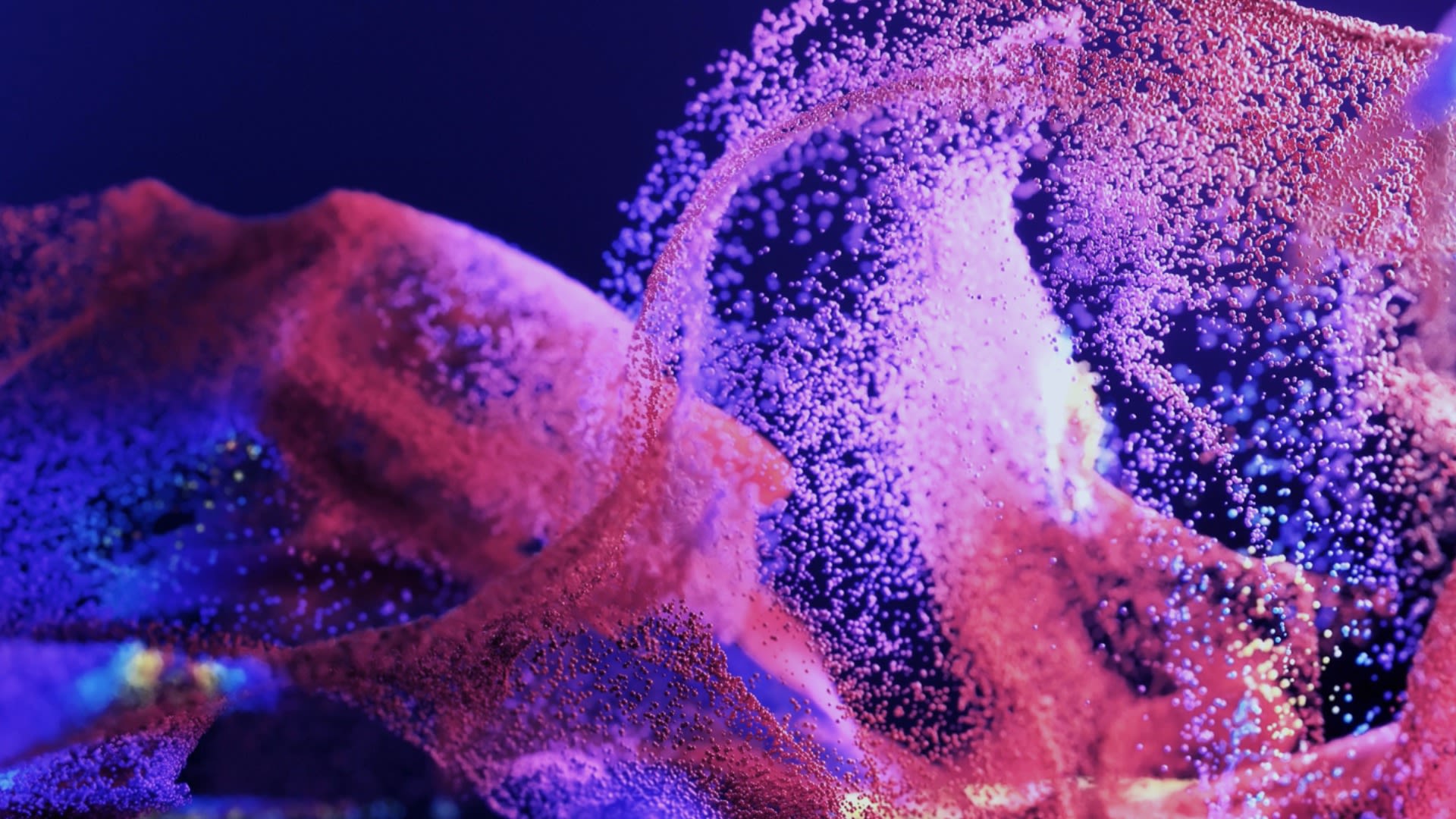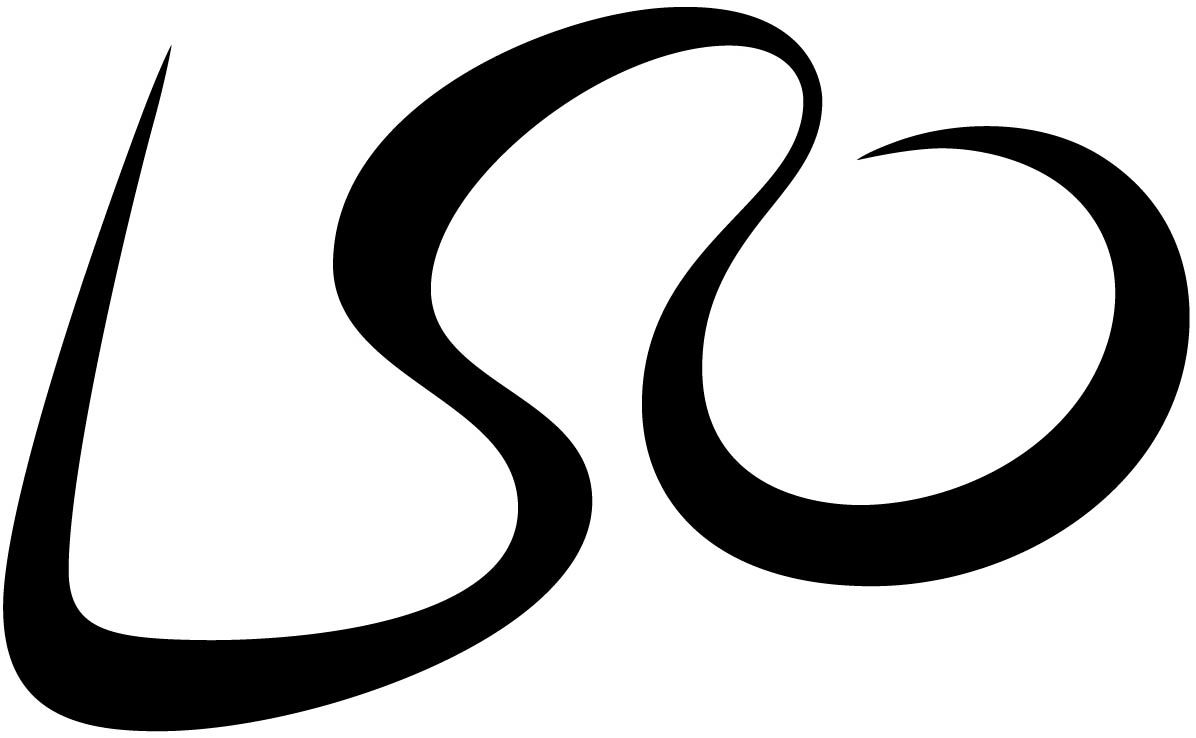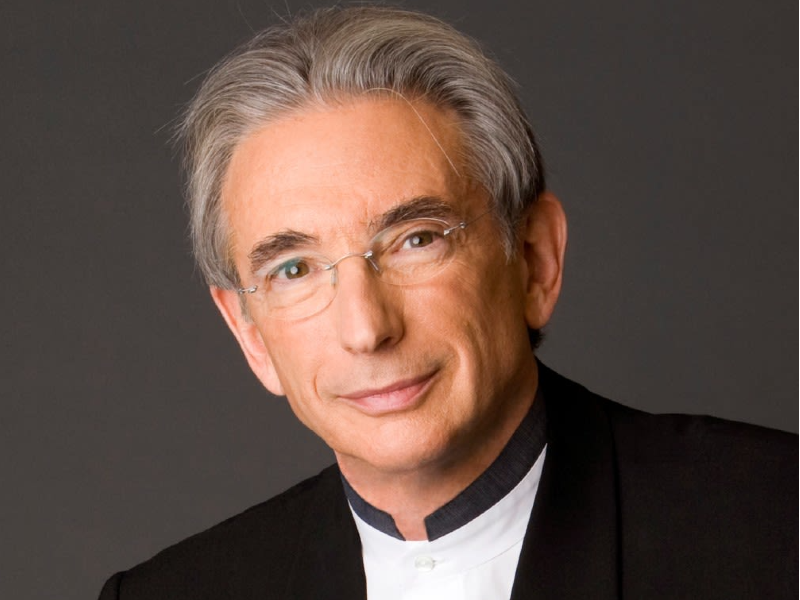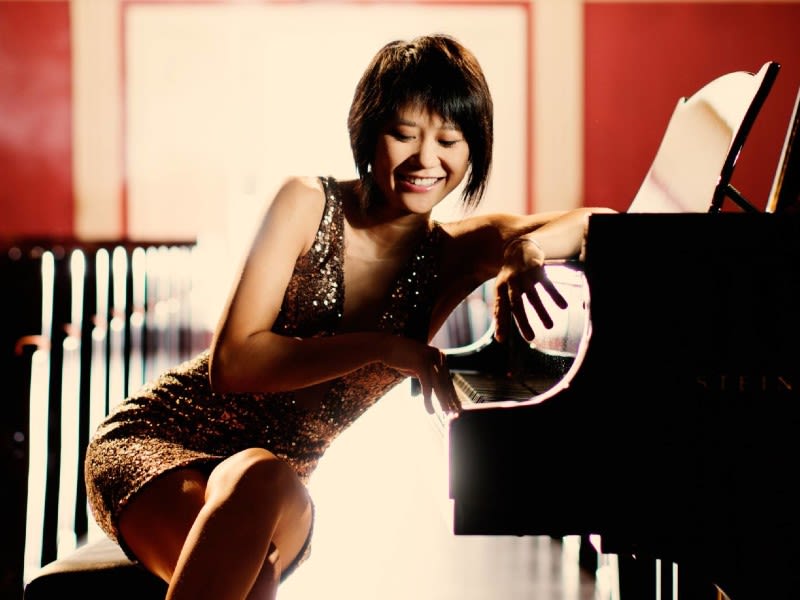London Symphony Orchestra
Grieg, Rachmaninoff & Beethoven

Welcome
A warm welcome to these LSO concerts. After 14 months away, it was wonderful last week to make our long-awaited return to our Barbican home, and to be able to reunite with audiences in person, sharing once again in the joy of live music. Sincere thanks to all of our supporters: your generosity has enabled us to continue sharing music with audiences across the globe through these challenging times, and now continues to assist our return to live performance and our recovery from the pandemic.
With these concerts we welcome back LSO Conductor Laureate Michael Tilson Thomas, who has been sorely missed over the past year. Across four concerts at the Barbican and LSO St Luke’s, he conducts music by Grieg and Copland, piano concertos by Rachmaninoff and Shostakovich, and symphonies by Beethoven and Tchaikovsky.
It is a pleasure to be joined also by soloist Yuja Wang, who has performed with the Orchestra and Michael Tilson Thomas regularly over the years, most recently in 2017 when she joined the Orchestra on tour in Europe. Following these London performances of Rachmaninoff’s and Shostakovich’s Second Piano Concertos, we look forward to Yuja Wang – and Michael Tilson Thomas – joining us for further concerts at Snape Maltings next week.
I hope you enjoy these performances. Our thanks to all of you, our audience members, for your support. It is a pleasure to be sharing in live music together again, and I look forward to welcoming you back to many more concerts in the months ahead. Next month we welcome back LSO Principal Guest Conductor François-Xavier Roth for concerts devoted to music of our time, particularly highlighting alumni of the LSO Panufnik Composers Scheme, including the UK premiere of Francisco Coll’s Violin Concerto with soloist Patricia Kopatchinskaja.

Kathryn McDowell CBE DL; Managing Director
Kathryn McDowell CBE DL; Managing Director
You can use your phone to view these notes during the concert. Use the menu icon in the top right of the screen to navigate.

Free WiFi
There is free WiFi in the Concert Hall, available through the Barbican Free WiFi network.
Please Note
Phones should be switched to silent mode. We ask that you use your phone only for reading the notes during the music. Photography and audio/video recording are not permitted during the performance.
Print at Home
A reduced version of this programme is available to download and print at home.
Support the LSO's Future
The importance of music and the arts has never been more apparent than in recent months, as we’ve been inspired, comforted and entertained throughout this unprecedented period.
As we emerge from the most challenging period of a generation, please consider supporting the LSO's Always Playing Appeal to sustain the Orchestra, assist our recovery from the pandemic and allow us to continue sharing our music with the broadest range of people possible.
Every donation will help to support the LSO’s future.
You can also donate now via text.
Text LSOAPPEAL 5, LSOAPPEAL 10 or LSOAPPEAL 20 to 70085 to donate £5, £10 or £20.
Texts cost £5, £10 or £20 plus one standard rate message and you’ll be opting in to hear more about our work and fundraising via telephone and SMS. If you’d like to give but do not wish to receive marketing communications, text LSOAPPEALNOINFO 5, 10 or 20 to 70085. UK numbers only.
Edvard Grieg
The Last Spring from 'Two Elegiac Melodies', Op 34
✒️1880 | ⏰5 minutes

This well-known piece is the second of Two Elegiac Melodies, scored for string ensemble, which Edvard Grieg composed in 1880. He published them the following year with a dedication to an Austrian fellow-composer and friend of Johannes Brahms, Heinrich von Herzogenberg. Both pieces – the first is The Wounded Heart – were arrangements of songs from Grieg’s set of 12 Melodies Op 33, published in Copenhagen in 1880 to words by the Norwegian nationalist poet, journalist and travel writer Aasmund Olavsson Vinje (1818–70).
Grieg set many of Vinje’s verses to music, and The Last Spring has always been one of his most popular songs. Like The Wounded Heart, the original text uses a rural dialect, landsmål, which educated Norwegians tended to despise as associated with ignorant peasants, but which both Vinje and Grieg celebrated as part of an authentic national folk tradition. The Last Spring, composed at Grieg’s summer retreat in the mountainous Hardanger district, has a haunting, melancholic quality: the poet describes the countryside shedding its blanket of winter snow and emerging clad in the freshness of spring, but fears he might be seeing it for the last time. Grieg’s enchanting string setting is dominated by an appealing violin melody.
Note by Wendy Thompson
Edvard Grieg
1843 – 1907 (Norway)

Edvard Grieg's mother, an accomplished pianist, was among the leading musical figures of Bergen, on the west coast of Norway. His father, who was of Scottish descent, served as British consul in the city and was also a keen amateur musician. They encouraged Edvard's musical talent, and from the age of six he received piano lessons from his mother. In 1858 the virtuoso violinist Ole Bull heard Grieg play and urged the 15-year-old to enrol at the Leipzig Conservatory. After his studies in Germany, Grieg returned to Bergen and established his reputation as a pianist; he then lived for a short period in Copenhagen. In 1867 he married his cousin Nina Hagerup, a singer.
In the late 1860s Grieg set about raising his stock in the Norwegian capital, Kristiania (now Oslo), a small city then with little appreciation of culture. 'Everyone hates my music,' he wrote in July 1867, 'even the professional musicians.' Later that year he completed his first set of Lyric Pieces for piano, several of which reveal an emerging nationalist style. Recognition in Norway came in the early 1870s and in 1874 Grieg received a lifetime stipend from the Norwegian government. The first performance of Ibsen's drama Peer Gynt in 1876, with incidental music by Grieg, made the composer a figure of national importance. A series of fine works followed, including the Holberg Suite and nine further albums of Lyric Pieces, all evincing Grieg's characteristic blend of Romantic lyricism and aspects of native folk music. His gift lay in the expression of intense emotion in works of often miniature proportions, as well as the creation of lyrical melodies.
'Artists such as Bach and Beethoven erected churches and temples in ethereal heights. In my music my aim is exactly what Ibsen says about his plays: 'I want to build homes for the people in which they can be happy and contented.''
Composer profile by Andrew Stewart
Serge Rachmaninoff
Piano Concerto No 2 in C minor Op 18
✒️1900–01 | ⏰35 minutes

1 Moderato
2 Adagio sostenuto – Più animato – Tempo I
3 Allegro scherzando
The Second Piano Concerto was the major work marking Serge Rachmaninoff’s return to composition, following the period of silence and self-doubt that came after the failure of his First Symphony in 1897. He wrote the second and third movements quickly in the summer of 1900, but ran into problems with the first movement. He was persuaded by his cousin, the pianist and conductor Alexander Siloti, to give a public performance of the concerto in its incomplete form – surely a risky venture for a composer so sensitive to criticism. The success of the two completed movements at a Moscow concert in December 1900 did much to re-establish Rachmaninoff’s self-confidence, and the premiere of the completed concerto followed on 27 October 1901.
Each of the concerto’s three movements begins with an idea which leads subtly into the main theme. In the first movement it is the magical wide-spread piano chords, increasing in intensity until they plunge into a great surging string melody. Here, as throughout the concerto, the lasting image is that of piano and orchestra playing together; for despite all the virtuosity demanded of the soloist, the piano is rarely heard alone, and the two elements are blended in an ever-changing symphonic texture.
In the slow second movement, after a hushed string introduction, it is the sound of piano and solo wind instruments that sets the mood, the varied textures masking the close relationships between the themes of the first two movements. The introduction to the finale hints at a march, but what emerges after the opening orchestral gestures and a brief piano cadenza is more in the nature of a vigorous dance which alternates with a long, vocal melody, closely related to the big tune of the first movement.
The Second Piano Concerto quickly became one of the most popular works in the repertory. The piano writing draws on all the resources of a late-Romantic keyboard style, ranging from dazzling bravura to confessional intimacy. Rachmaninoff always maintained that the difficulties of the Second Concerto were just as great as those of the formidable Third, composed nine years later, but were of a different order: it is not a question of the technique needed to master the notes, but of judging the exact sonority and weight of the notes in different registers to produce the gradations of tone that made the composer’s own performances so outstanding.
Note by Andrew Huth
Serge Rachmaninoff
1873 (Russia) – 1943 (United States)

‘Melody is music, the basis of music as a whole, since a perfect melody implies and calls into being its own harmonic design’.
Serge Rachmaninoff's passion for melody was central to the Russian composer, pianist and conductor's work, clearly heard in his famous Rhapsody on a Theme of Paganini.
Although the young Serge’s father squandered much of the family inheritance, he at first invested wisely in his son’s musical education. In 1882 the boy received a scholarship to study at the St Petersburg Conservatory, but further disasters at home hindered his progress and he moved to study at the Moscow Conservatory. Here he proved an outstanding piano pupil and began to study composition.
Rachmaninoff’s early works reveal his debt to the music of fellow Russian composers Rimsky-Korsakov and Tchaikovsky, although he rapidly forged his own personal, richly lyrical musical language. His First Symphony of 1897 was savaged by the critics, which caused the composer’s confidence to evaporate. In desperation he sought help from Dr Nikolai Dahl, whose hypnotherapy sessions restored Rachmaninoff’s self-belief and gave him the will to complete his Second Piano Concerto, widely known through its later use as the soundtrack for the classic film Brief Encounter. Thereafter, his creative imagination ran free to produce a string of unashamedly romantic works divorced from newer musical trends.
He left Russia shortly before the October Revolution in 1917, touring as pianist and conductor and buying properties in Europe and the United States.
Composer profile by Andrew Stewart
Ludwig van Beethoven
Symphony No 5 in C minor
Op 67
✒️1807–08 | ⏰35 minutes

1 Allegro con brio
2 Andante con moto
3 Allegro
4 Allegro
Time and familiarity, those old enemies of innovation, have conspired to mellow the impact of Beethoven’s Fifth Symphony on the modern ear. It has often been in danger of acquiring, from frequent repetition, a cosiness and a friendliness that can dull its surprises, soften its blows. Yet this is a work which caused the French composer Jean-Francois Le Sueur to be so bowled over when he first heard it in 1828 that, on reaching afterwards for his hat, he could not find his head!
Those who took their seats in Vienna’s Theater an der Wien for the Symphony's premiere in 1808 would doubtless have had some idea what to expect. Anyone who had already heard Beethoven's Third Symphony, the ‘Eroica’, or indeed the ‘Pastoral’ Symphony that was also premiered earlier in the same concert, would have known that he had greatly expanded the timescale of the symphonic form, raised its level of seriousness and expressive weight, and brought to it an increasingly theatrical, even narrative strain. But few can have been prepared for the brusque, almost visceral assault this unique work was to make on their senses.
Beethoven was a revolutionary, but he was one who worked within an established tradition, and who was subject to his fair share of influences. Several of these come together in the Fifth Symphony. One was Amadeus Mozart, with whom he shared a special feeling for the expressive power of C minor (both men composed some of their most emotional and personal works in that key); another was the large-scale, open-heartedly bombastic music composed for the public celebrations of Revolutionary France; and a third was Franz Joseph Haydn, his teacher, who time and time again had shown in his string quartets and symphonies how to construct whole movements from small thematic cells.
First Movement
Haydn's influence is undoubtedly at its most potent in the Fifth’s highly dramatic first movement, totally dominated by the urgent opening four-note motif. The music here is astonishingly terse, pared down to the melodic minimum, and the second theme is quickly upon us: a relaxed expansion of the main motif on horns, answered by a reassuring embrace from the violins and woodwind. Yet it is this consolatory theme which, reappears in swirling, nightmarish transformation in the movement’s long and turbulent coda.
Second Movement
There is more than a hint of Haydn’s influence, too, in the slow second movement, which has the overall shape of one of his favourite forms, the ‘double variation set’ (where two themes are varied in alternation, often in successively smaller note values). Beethoven’s themes are both in A-flat major, but the second – rather march-like despite being in triple time – soon modulates unexpectedly to C major, where it acquires an extra grandeur. At the end of this particular movement, however, it is the more graceful first theme which wins the day.
Third Movement
Beethoven does not call the third movement a ‘scherzo’, though in form and function it is one. But if there is humour here, it is of a grim cast and beset by uncertainty. When a sturdier theme emerges, it is brief and troubled, dominated by a balefully intoned horn-call transformation of the four-note motif from the first movement. The mood lightens in the scurryingly fugal major key ‘trio’ section, but at its reappearance the first theme, played pizzicato and pianissimo, takes on a stealthy, nocturnal character, before leading us to the most celebrated passage in the whole symphony. Here, over held string notes and sinister tappings from the timpani, wisps of the first theme are heard, leading us for the moment we know not where.
Final Movement
Gradually the excitement rises, as with the sense of something seen approaching from a distance, until with a last sudden rush we find ourselves propelled into the blazingly triumphal C major of the finale, one of the most upliftingly theatrical moments in all music.
Whether one experiences the Fifth Symphony as a journey from darkness to light, a depiction of adversity overcome, or as an emergence from some sort of underworld, there is no doubt that it has an effect on the listener that goes beyond the appreciation of its musical and formal niceties. Beethoven himself has left little clue as to what the symphony is ‘about’, save for a possibly apocryphal remark to his friend Schindler about the first movement: ‘thus Fate knocks at the door’.
Note by Lindsay Kemp
Ludwig van Beethoven
1770 (Germany) –1827 (Austria)

Ludwig van Beethoven showed early musical promise, yet reacted against his father's attempts to train him as a child prodigy. The boy pianist attracted the support of the Prince-Archbishop, who supported his studies with leading musicians at the Bonn court. By the early 1780s, Beethoven had completed his first compositions, all of which were for keyboard. With the decline of his alcoholic father, Ludwig became the family breadwinner as a musician at court. Encouraged by his employer, the Prince-Archbishop Maximilian Franz, Beethoven travelled to Vienna to study with Joseph Haydn. The younger composer fell out with his renowned mentor when the latter discovered he was secretly taking lessons from several other teachers. Although Maximilian Franz withdrew payments for Beethoven's Viennese education, the talented musician had already attracted support from some of the city's wealthiest arts patrons.
His public performances in 1795 were well received, and he shrewdly negotiated a contract with Artaria & Co, the largest music publisher in Vienna. He was soon able to devote his time to composition or the performance of his own works. In 1800 Beethoven began to complain bitterly of deafness, but despite suffering the distress and pain of tinnitus, chronic stomach ailments, liver problems and an embittered legal case for the guardianship of his nephew, Beethoven created a series of remarkable new works, including the Missa solemnis and his late symphonies and piano sonatas. It is thought that around 10,000 people followed his funeral procession on 29 March 1827. Certainly, his posthumous reputation developed to influence successive generations of composers and other artists inspired by the heroic aspects of Beethoven's character and the profound humanity of his music.
Composer profile by Andrew Stewart
Artist Biographies

Michael Tilson Thomas
LSO Conductor Laureate
Michael Tilson Thomas is Music Director of the San Francisco Symphony, Founder and Artistic Director of the New World Symphony and Conductor Laureate of the London Symphony Orchestra. Born in Los Angeles, he is the third generation of his family to follow an artistic career.
Michael Tilson Thomas began his formal studies at the University of Southern California where he studied piano with John Crown, and conducting and composition with Ingolf Dahl. At 19 he was named Music Director of the Young Musicians Foundation Debut Orchestra. He worked with Stravinsky, Boulez, Stockhausen and Copland on premieres of their compositions at Los Angeles’ Monday Evening Concerts.
In 1969, after winning the Koussevitzky Prize at Tanglewood, he was appointed Assistant Conductor of the Boston Symphony Orchestra. That year he also made his New York debut with the Boston Symphony and gained international recognition after replacing Music Director William Steinberg mid-concert. He was later appointed Principal Guest Conductor of the Boston Symphony Orchestra where he remained until 1974. He was Music Director of the Buffalo Philharmonic from 1971 to 1979 and a Principal Guest Conductor of the Los Angeles Philharmonic from 1981 to 1985.
His guest conducting includes appearances with the major orchestras of Europe and the US. His recorded repertoire of more than 120 discs includes works by composers such as Bach, Beethoven, Mahler, Prokofiev and Stravinsky as well as his pioneering work with the music of Charles Ives, Carl Ruggles, Steve Reich, John Cage, Ingolf Dahl, Morton Feldman, George Gershwin, John McLaughlin and Elvis Costello. He recently finished recording the complete orchestral works of Gustav Mahler with the San Francisco Symphony.
Tilson Thomas’s television work includes a series with the LSO for the BBC, the television broadcasts of the New York Philharmonic Young People’s Concerts from 1971 to 1977 and numerous productions on PBS Great Performances. He and the San Francisco Symphony produced a multi-tiered media project, Keeping Score, which includes a television series, web sites, radio programmes and programmes in schools.
In February 1988 he inaugurated the New World Symphony, an orchestral academy for graduates of prestigious music programmes. New World Symphony graduates have gone on to major positions in orchestras worldwide.
As Principal Conductor of the LSO from 1988 to 1995, Tilson Thomas led the Orchestra on regular tours in Europe, the US and Japan, as well as at the Salzburg Festival. In London he and the Orchestra mounted major festivals focusing on the music of Steve Reich, Gershwin, Brahms, Tōru Takemitsu, Rimsky-Korsakov and the School of St Petersburg, Debussy and Mahler. As Conductor Laureate of the LSO, he continues to lead the Orchestra in concerts in London and on tour.
Michael Tilson Thomas is a Chevalier dans l’ordre des Arts et des Lettres of France, was Musical America’s Musician of the Year and Conductor of the Year, Gramophone’s Artist of the Year and has been profiled on CBS’s 60 Minutes and ABC’s Nightline. He has won eleven Grammy Awards for his recordings. In 2008 he received the Peabody Award for his radio series for SFS Media, The MTT Files. In 2010, President Obama awarded him with the National Medal of Arts, the highest award given to artists by the US Government. For his lifetime artistic achievements, he was selected to receive the 2019 Kennedy Center Honors.
Yuja Wang
piano
Critical superlatives and audience ovations have continuously followed Yuja Wang’s dazzling career. Recent highlights for the Beijing-born pianist have included an 'Artist Spotlight' series at the Barbican Centre, including the first London performance of John Adams’ newest piano concerto (premiered by her in Spring 2019) titled Must the Devil Have All the Good Tunes? with the Los Angeles Philharmonic and Gustavo Dudamel; and recitals with cellist Gautier Capuçon and clarinettist Andreas Ottensamer. In Autumn 2019 she toured China with the Vienna Philharmonic, presenting concerts in Macao, Guangzhou, Shanghai and Wuhan.
Wang's international breakthrough came in 2007 when she replaced Martha Argerich as soloist with the Boston Symphony Orchestra. She later signed an exclusive contract with Deutsche Grammophon and has since established her place among the world’s leading artists, with a succession of critically acclaimed performances and recordings.
Yuja Wang was named Musical America’s Artist of the Year in 2017.
London Symphony Orchestra
The London Symphony Orchestra was established in 1904, and is built on the belief that extraordinary music should be available to everyone, everywhere.
Through inspiring music, educational programmes and technological innovations, the LSO’s reach extends far beyond the concert hall.
Visit our website to find out more.

On Stage
Leader
Roman Simovic
First Violins
Carmine Lauri
Clare Duckworth
Laura Dixon
Gerald Gregory
Maxine Kwok
Claire Parfitt
Laurent Quénelle
Harriet Rayfield
Sylvain Vasseur
Second Violins
Julián Gil Rodríguez
Thomas Norris
David Ballesteros
Matthew Gardner
Naoko Keatley
Alix Lagasse
Iwona Muszynska
Andrew Pollock
Violas
Edward Vanderspar
Gillianne Haddow
Malcolm Johnston
Anna Bastow
Stephen Doman
Carol Ella
Robert Turner
Cellos
Rebecca Gilliver
Alastair Blayden
Daniel Gardner
Laure Le Dantec
Amanda Truelove
Double Basses
Colin Paris
Thomas Goodman
Joe Melvin
José Moreira
Flutes
Gareth Davies
Patricia Moynihan
Piccolo
Sharon Williams
Oboes
Juliana Koch
Rosie Jenkins
Clarinets
Chris Richards
Chi-Yu Mo
Bassoons
Daniel Jemison
Dominic Tyler
Contra Bassoon
Dominic Morgan
Horns
Timothy Jones
Angela Barnes
Alexander Edmundson
Jonathan Maloney
Trumpets
Jason Evans
Niall Keatley
Trombones
Peter Moore
Philip White
Bass Trombone
Paul Milner
Tuba
Ben Thomson
Timpani
Nigel Thomas
Percussion
Sam Walton
David Jackson

Programme Contributors
Wendy Thompson studied at the Royal College of Music, before taking an MMus in musicology at King’s College, London. In addition to writing about music she is Executive Director of Classic Arts Productions, a major supplier of independent programmes to BBC Radio.
Andrew Stewart is a freelance music journalist and writer. He is the author of The LSO at 90, and contributes to a wide variety of specialist classical music publications.
Andrew Huth is a musician, writer and translator who writes extensively on French, Russian and Eastern European music.
Lindsay Kemp is Founder and Artistic Director of the Baroque at the Edge Festival, an Artistic Adviser to the York Early Music Festival and a regular contributor to Gramophone magazine. For 30 years he was a Producer for BBC Radio 3, including programming lunchtime concerts at Wigmore Hall and LSO St Luke’s
The London Symphony Orchestra is hugely grateful to all the Patrons and Friends, Corporate Partners, Trusts and Foundations, and other supporters who make its work possible.
The LSO's return to work is generously supported by the Art Mentor Foundation Lucerne, DnaNudge and the Weston Culture Fund.






